8个机制分析《Puzzle & Dragons》的得失
作者:Michail Katkoff
在日本,收益第一的免费手机游戏是GungHo Entertainment在iOS和Android平台发布的《Puzzle & Dragons》(以下简称P&D)。根据日本媒体报道,这款游戏在日本国内的月收益估计介于50亿至70亿日元(即5400万美元到7550万美元)。尽管P&D在日本大获成功,却没有得到欧美市场的青睐。
我将在本文中分析促使P&D在日本声势如火的8个关键机制。在我看来,也正是这8个机制导致它没能征服美国苹果应用商店。
核心循环
P&D的核心循环非常简单。玩家进入地下城,根据地下城的难度,玩家需要耗一定的精力。精力会随着时间慢慢恢复。一旦玩家完成地下城,就会得到经验点、金币(软通货)和少量随机怪兽。
因为地下城的难度越来越大,玩家必须不断升级和进化他们的怪兽。升级怪兽会增加它的属性。但为了升级一只怪兽必须牺牲其他怪兽。当怪兽级别封顶时,玩家就可以进化它了。进化怪兽需要一系列特殊的进化材料(稀有怪兽)。牺牲和进化要消耗金币,并且随着怪兽等级升高,费用也迅速升高。
8个关键机制
1、简化
表面看来,P&D是极其简单的一款游戏。玩家玩的基本上就是一款简化版的竞技游戏,只要保证魔法球的颜色与他们使用的怪兽的颜色匹配就行了。
图3、玩家匹配的颜色越多,怪兽造成的伤害就越大。就这么简单。
完成地下城也很简单,但收获颇丰,因为玩家打开怪兽的蛋时总是能得到奖励。事实上,你只要一只手就能玩P&D了,没什么技术含量。
2、复杂度
玩家清扫完几个地下城之后,会发生两件事。第一,玩家的怪兽盒满了,所以玩家不得不开始考虑留下什么怪兽,牺牲或出售哪些怪兽。第二,玩家开始想要更强大的怪兽,毕竟清扫地下城的速度越来越慢,难度越来越大。
对更强怪兽的要求使玩家乐意学习如何获得那些怪兽,这样就接受了游戏复杂的一面。
图4、怪兽的属性设置、进化、攻击力提升和大怪兽的收集使P&D变得非常复杂。
整个元游戏的复杂度来自玩家的怪兽收集。留住哪只怪兽?放弃哪只怪兽?我收集到的怪兽是不是都太像了?如何组合怪兽的特殊技能?我需要什么进化材料?
这个元游戏还影响了玩家的游戏行为。玩家在游戏中的沉浸感加强了,因为现在游戏不只是有趣了。每一个环节都有明确的目标,为了得到更多可以牺牲或出售的怪兽,玩家玩得更频繁了。
3、精力(精力机制)
P&D的限制机制之一就是精力,每一次玩家进入地下城,精力就开始消耗。但P&D的精力系统有几点不同于Facebook游戏中的精力机制 。
P&D的精力机制的作用方式非常不错,它加快了游戏早期的进度,但一旦玩家对游戏更加沉迷,精力系统反而拖延了进度。这是因为在一开始,玩家的精力上限非常低,所以回复得也很快;虽然精力上限会随着游戏升高,但回复所需的时间也越来越长。延缓进度是游戏赢利的重要手段。
图5、在地下城入口处有售精力,但不同的地下城有不同的价格。
精力上限提升还有两个设计优点。第一,P&D在不同的地下城出售不同价格的精力。通过增加进入更高难度的地下城的价格,P&D限制了熟练玩家的每次游戏长度。第二,不必担心菜鸟玩家会进入难度大的地下城(他们没有足够的精力),P&D让所有玩家都能看到那些特殊的地下城,作为玩家,甚至是新手玩家的长期目标。
4、怪兽消耗
为了进化怪兽,玩家必须首先升级它们,然后才有进化。升级需要牺牲玩家从地下城收集到的怪兽。一旦目标怪兽升级到最高级,玩家就可以将它进化成新的怪兽。但进化不容易,玩家必须从地下城里找到特殊的进化材料。
图6、首先,玩家必须牺牲大量怪兽将主力怪兽升到最高级。然后,玩家可以使用稀有怪兽(进化材料)将主力怪兽进化成新的希有怪兽,并且还能再进化。
升级和进化都要消耗金币。收集金币的唯一方法就是完成地下城。玩家不能用真钱购买金币。所以玩家确实得舍得花时间玩游戏。
但这个怪兽消耗机制真正了不起的地方是,怪兽可以是永久的也可以是可消耗的,这完全取决于玩家的选择。结果就是,游戏经济对那些收集到大量不同怪兽的玩家非常有利。这一点也非常适合免费模式,因为免费模式奖励肯花时间的玩家。
5、赌博元素
在P&D中,玩家不可以购买他们想要的或需要的怪兽。事实上,得到新怪兽的方法只有两个。一是完成地下城,二是从机器中得到。玩家得到的是怪兽蛋,之后会随机孵化出新怪兽。
图7、拉龙机的把手,看到蛋孵化出随机怪兽。孵化新怪兽就像玩老虎机,除了玩家总是赢这一点不像。
缺少直接的怪兽购买方式和随机孵化怪兽使这款游戏的赢利情况相当好。首先,玩家不可以直接购买自己想要的怪兽,这就增加了玩家在游戏中的投入。想一想,如果玩家不必为了升级一只怪兽而完成大量地下城,他们怎么可能对游戏有沉浸感?缺少立即购买的渠道还维持了游戏的经济,因为玩家不能用购买到的强力怪兽扫荡地下城。最后,随机性使购买无上限。玩家不是购买一只怪兽,而是把大量金币投进产生随机怪兽的机器中。
6、快速的内容生成
基本上所有的免费游戏都依赖内容更新。一次良好的内容更新会给游戏增加一些玩家需要的新东西。新东西会鼓励玩家继续游戏,以得到新增的东西。新东西甚至会刺激某玩家花钱立即得到。
但每月增加新内容与发现自己在内容跑步机上是不同的。开发团队增加新内容只是为了避免玩家感到无聊。当你的注意力只放在内容上时,你就无法提升游戏的其他方面,比如稳定性、图象、UI、品牌、社交等。
图8、图中所示的关卡就是一种糟糕的内容跑步机。一旦玩家通掉所有关卡,他们就不会再玩了,除非增加新关卡。
你可以借游戏机制和游戏设计避免去掉内容跑步机的风险。例如,增加社交渠道如聊天、组队等不是让玩家自己在游戏中添加内容的办法。PvP是另一个防止内容单调的好办法。
P&D以避开内容跑步机是因为它具有极易生成的内容。用于玩家进度的地下城是非常容易开发的。地下城看起来大同小异,只是墙面的颜色和敌人改变了。所以增加几百个地下城并非难事。甚至不需要新版本,只需要简单的服务器单方面升级。
图9、火城、水城、地城……看起来都差不多,所以容易制作。
7、社交
我必须说P&D其实是一款特殊的社交游戏。没有聊天。没有玩家对玩家模式。没有直接的玩家间互动。没有指南。没有社交网络。然而,玩家每一次进入地下城,都有一个助手陪伴他,并且玩家间的好友请求是很多的。
在进入地下城以前,玩家必须选择助手,这里的助手是另一名玩家的怪兽。当一名玩家的怪兽被其他玩家选作助手时,他就会收到好友点数,可以用于机器孵化新怪兽。玩家玩游戏越经常,他的怪兽就越可能被选作助手,这样他就能得到更多好友点数。
玩家完成地下城后,他们可以通过发送好友请求将助手主人添加为好友。根据玩家等级,好友数量是不同的。等级越高,可以添加的好友就越多。使用好友的怪兽作为助手,除了可以得到更多好友点数,还可以增加额外的领导技能,可以使你自己的怪兽更强大。交到活跃的好友是非常重要的,因为玩家只能使用好友的怪兽一次,等到助手的主人退出游戏后再次登录才能再次使用。
图10、玩家每次进入地下城都必须选择其他玩家的怪兽来帮助他。当玩家完成地下城后,可以加对方为好友。使用好友的怪兽可以增加你的好友点数,好友点数可用于机器孵化新怪兽。
总之,这款游戏的社交机制通过鼓励每天多次登录来增加玩家留存率。社交机制还刺激玩家的进度,因为自己的怪兽越好,被选作助手的可能性才越高,玩家得到的好友点数才越多。
8、特殊的地下城(事件)
特殊地下城对玩家开放的时间是有限制的。有些地下城是白天开放,如周一地下城;有些地下城提供特殊的挑战任务。但所有特殊地下城都有一个共同特点,那就是玩家要进化怪兽,就必须完成地下城。
正如在赌博元素中提到的,得到更好的怪兽的唯一方法就是进化怪兽,而进化需要稀有怪兽;玩家只有完成特殊地下城才能得到稀有怪兽;远成特殊地下城,玩家必须有强大的怪兽、较高的精力值和一些非常好的怪兽助手。
换句话说,特殊地下城完美地嵌入游戏的核心循环中。
图11、特殊地下城有时限,并且更费精力。里面的敌人更难战胜。玩家必须完成特殊地下城才能得到稀有的进化材料。
8+、付费继续
记得街机游戏么?记得玩《Time Cop》或《Virtual Fighter》输掉的事么?记得游戏时间只剩10秒,投币后才能继续玩的事么?P&D其实也有那种机制。
图12、付费才能继续游戏。简单但总是特别有效。
好游戏,但只是针对日本市场而言。
P&D自二月就雄登日本苹果应用商店收益榜的宝座。然而当你看到美国苹果应用商店收益榜时,你会发现P&D甚至没有挤进前50名。
图13、P&D没能在美国苹果应用商店复制它在国内的成功。
P&D不能占领美国市场的原因是很清楚的,因为游戏的复杂度。没有玩过强调角色养成的日本游戏的玩家很难理解这款游戏的复杂度,更别说玩得高兴了。但《Rage of Bahamut》成功了。《Marvel: War of Heroes》也成功了。这两款游戏更加复杂,但游戏机制非常类似。
在我看来,其失败的原因包括复杂度、错配的主题和用户获取策略不给力。除了亚洲市场,你不会见到太多怪兽和卡片收集游戏,因为非亚洲玩家不熟悉这类题材。那么当你给这么一款陌生的游戏这种复杂度时,对于休闲玩家来说,就是难上加难了。对于有经验的玩家来说,虽然他们能理解P&D,但缺少PVP模式就是硬伤了。最后,我认为GungHo Online Entertainment并没有采取任何策略来占领美国苹果应用商店,不像DeNA和Gree,这两家公司都会花钱“买”进排行榜,尽管这意味着损失净收益。(本文为游戏邦/gamerboom.com编译,拒绝任何不保留版权的转载,如需转载请联系:游戏邦)
How Puzzle & Dragons Does It
by Michail Katkoff
Japan’s top grossing free-to-play mobile game, GungHo Entertainment’s Puzzle & Dragons (P&D) for iOS and Android, is estimated to generate between five billion yen ($54 million) to seven billion yen ($75.5 million) a month in the country, according to the Japanese press as translated by industry watcher and analyst Dr. Serkan Toto. Despite the massive success in Japan P&D hasn’t really succeeded to take over the Western market.
In this post I’ll go through the 8 key mechanics, which make P&D so successful in Japan. In my opinion these 8 mechanics are also why P&D hasn’t had success in the US AppStore.
The Core Loop
P&D’s core loop is very simple. Player enters a dungeon, which costs specific amount of Stamina based on the toughness of the dungeon. Stamina reloads over time. Once player has completed the dungeon they earn XP, Coins (soft currency) and few random monsters.
As the dungeons get tougher players need to constantly level up and evolve their monsters. Leveling up a monster increases monster’s stats. Leveling up requires players to sacrifice other monsters they own. Once the monster is leveled up to the maximum level player can evolve the monster. Evolving requires player to have specific set of evo material (rare monsters). Sacrificing and evolving costs Coins and the prices rise steeply hand in hand with the monster’s level.
8 key game mechanics
1. Simplicity
On the surface P&D is an extremely simple and rewarding game. Essentially what player needs to do is play simplified match game and just make sure that the orb colours match the color of monsters they use.
The more colours player matches the more damage monsters will cause. It’s that simple.
Completing dungeons is easy and yet very rewarding as there’s always that element of surprise when player opens up the monster eggs earned for completing the dungeon. The fact that you can play P&D with only one hand and that it requires very little skills just adds to the simplicity of the game.
2. Complexity
After player has cleared a dozen of dungeons two things happen. First is that player’s monster box starts to get full forcing players to think which monsters they are going to keep and which they going to sacrifice or sell. Second is that player starts craving for tougher monsters as the dungeons get slowly but steadily tougher. Demand for better monsters results in players being willing to learn how to get those monsters and thus ready for the complexity of the game.
Stat sets of individual monsters, evolving, power-up and larger
monster collections make P&D very complex.
The complexity comes from the whole meta-game that swirls around player’s monster collection. Which monster will I keep? Which monsters will I get rid off? What will my monster team look like? How to make the perfect combination of my monsters’ special skills? What evo materials do I need to find?
This meta game also starts to affect players playing behavior. Engagement improves, as the playing is not just about fun anymore. Now every session has a clear target and players start playing more often to earn more monsters they can sacrifice or sell.
3. Stamina (Energy mechanics)
One of the key restriction mechanics in P&D is Stamina, which is consumed every time player enters a dungeon. There are few twists that differentiate P&D’s energy mechanics from the more common energy mechanics that we know from Facebook games.
The way energy mechanics are implemented in D&G is very well thought as it enables fast progress in the beginning and slows the progress down once player is more engaged. This is because in the beginning players Stamina caps are very low and thus quickly replenished, but as the game progresses Stamina caps will grow and so will the time it takes for the Stamina to be replenished. Slowing down progression is the best way to drive monetization.
Different dungeons have different Stamina prices that are charged upon enter
Growing Stamina cap has also two additional game design benefits. Firstly P&D puts on different Stamina prices on different dungeons. By increasing a price to enter tougher dungeons P&D limits the session length of experienced players. Secondly when there’s no worry that inexperienced players may wonder into tougher dungeons (they just don’t have enough stamina to even enter them) P&D can have those special dungeons visible for all their players thus creating a long term target for even the most novice of players.
4. Monster Consumption
In order to improve monsters players need to first level them up and then evolve them. Leveling up requires players to sacrifice monsters they collect from the dungeons. Once the target monster is leveled up to it’s max level player can evolve that monster into something new and exciting. But evolving isn’t easy, as player needs to find specific set of evo monsters from the dungeons to make the evolvement happen.
First players need to sacrifice dozens of monsters to power-up monster into maximum level. Then players can use rare monsters (Evo Material) to evolve that monster into a totally new kind of rare monster, which again can be evolved eventually.
Then there’s the issue of Coins as both leveling up and evolving costs. The only way to get more Coins is to complete dungeons. Players can’t even buy Coins with real money. So to progress players really need to invest time.
But what’s truly great about the well funcioning monster consumption mechanics is the fact that the monsters are both permanent and consumable depending fully on what player chooses to do with them. This allows the game economy to reward players constantly with dozens of different monsters. And it also goes hand in hand with the best practice of F2P, which is rewarding players for the time spent playing.
5. Gambling Elements
In P&D players can’t buy the monsters they want or need. In fact there’s only two way to get new monsters. First one is by completing dungeons and the second one is by getting them from the Machine. New monsters come always in eggs, which are then hatched in front of the player revealing a random monster inside.
Pull Dragon Machine’s hand, watch an egg pop out and see it hatch into a random monsters. Purchasing new monsters is like playing slots, except that player always wins.
The lack of direct monster purchase and randomness are what makes this game monetize so well. First of all by taking away the possibility to directly buy the desired monsters P&D increases the engagement. Think about it. If players wouldn’t need to complete tens of dungeons just to level up a single monster they wouldn’t feel as invested to the game. The lack of instant buy possibility also keeps the economy of the game working as players cant run through the dungeons with super powerful monsters they just bought. Finally the randomness also takes away the cap from purchases.
Instead of buying that one monster player needs she’ll end up using the tens of dollars into Machine, which spits out random monsters.
6. Rapid Content Production
The fact is that basically all of the F2P games are dependable on new content delivered via updates. A good content update adds something new to the game that players will want and need. Something new, that will encourage players to continue playing to earn this added content. Something new, that will make some players want to spend their money to get it instantly.
But there’s a difference between adding new content on monthly bases and finding yourself in a content treadmill. Content treadmill, where all the time of the development team goes into adding new content just to keep the players away from boredom. And when you’re concentrating just on the content you’ll fail to improve all the other aspects of the game, such as stability, graphics, UI, brand, social etc.
Level based games are infamous examples of content treadmills.
Once player has beaten all the levels they will quit playing until there are new levels added.
You can reduce the risk of ending in a content treadmill with game mechanics and game design. For example adding social channels such as chat, groups and alliances is a good way to have players adding content to the game. Player vs. Player is another great way to avoid content treadmill.
The way P&D avoids content treadmill is by having extremely easily producible content. Players progress by beating dungeons and those dungeons are very easy to develop. Dungeons look pretty much identical as only the color of the walls and the opponents change. So adding few hundreds dungeons is not a big deal. It doesn’t even require a new build, just a simple server side update.
Fire dungeon, water dungeon, earth dungeon… All of them look identical and thus are very easy to create.
7. Social
I’d say P&D is a social game in it’s own way. There’s no chat. No player versus player mode. No direct interaction with other people. No guilds. And no social network integrations. Yet every time player enters a dungeon they enter it with another player as their helper and the amount of friend requests players send to each other is huge.
Before entering a dungeon player has to always choose a helper, which is a monster from another player. Every time players uses another player’s monster as a helper the helper’s owner receives Pal Points, which are used for the Machine to get new monsters. The more often player plays the higher chance there is to appear as a helper for other players and thus earn more Pal Points.
After player has cleared a dungeon they can add helper’s owner as a friend by sending a friend request. Players can have a specific amount of friends based on their rank. The higher the rank the more friends players can have. Using friends’ monsters as helpers results in getting more Pal Points as well as getting additional Leader Skill, which make you monsters more powerful. Having active friends is crucial as player can use helper only once after which they have to wait until helper’s user logs out and logs back to the game.
Every time players enter a dungeon they have to choose a player to help them. When the players have cleared a dungeon they can become friends. Having friend helping you out gives you more Pal Points, which are then used to get monsters from the Machine.
So in short the social mechanics of the game drives retention by encouraging several logins per day. Social mechanics also drive players to progress as the better helper monster they have to offer the more often it will be used, which will result in player getting more Pal Points.
8. Special Dungeons (Events)
There are several limited time special dungeons open for player to enter. Some of the dungeons are day specific, such as Monday Dungeons while others are just there to provide a serious challenge for the players. But there’s one common element with all the special dungeons and that is that in order to truly evolve monsters players need to complete these dungeons.
As discussed in the Gambling Elements above the only way to get better monsters is to evolve them and evolving requires sets of very rare monsters, which players can earn by completing the special dungeons. So in order to progress player needs to play special dungeons and in order to complete special dungeons player needs to have powerful monsters, high Stamina cap as well as some very good helper monsters from friends. In other words, Special Dungeons are perfect fit with the core loop of the game.
Special dungeons have time limit and they cost more Stamina to enter. They are also a lot tougher to beat. Player needs to beat special dungeons to get rare evo material needed to evolve their monsters.
And the Special Dungeons our tough! Just check out this blog describing strategies on how to beat the Special Dungeons:
http://puzzledragonsus.blogspot.fi/2012/11/legendary-mech-dragon-friday-dungeon.html
8+. Pay to Continue
Remember game arcades? Remember playing Time Cop or Virtual Fighter and losing? Remember seing that 10 second counter during which you can insert a coin and continue playing? Well P&D has that mechanic and it absolutely rocks.
Pay to continue your game. Simple but yet always extremely efficient.
Great game, though only in Japan
P&D has held on to its number one spot in the Japanese AppStore’s top grossing list since February. Yet when you look at the grossing rankings of the US AppStore P&D hasn’t been able to even establish itself in top 50.
P&D hasn’t been able to reproduce it’s success in the US AppStore
It would be easy to say that P&D’s lack of success in the US market is due to the complexity of the game. Without prior experience in Japanese games that rely on evolving characters this game is very hard to understand and enjoy. But Rage of Bahamut made it to the top. So did Marvel: War of Heroes. And both of them are far more complex titles with very similar game mechanics.
In my opinion it’s a combination of complexity, mismatch theme and modest user acquisition strategy. You don’t see many monster and card collection games coming outside the Asian market because they aren’t that familiar as a theme to us. Then when you add the complexity to a distant theme it all becomes even more complex for a casual player. And for a more experienced players, who actually understand how to play P&D the lack of PvP is a serious turn off. Finally I assume that GungHo Online Entertainment is not set to take over the US AppStore by any means necessary unlike DeNA and Gree who both can buy their way to the top of the list even if it means net loss.(source:gamasutra)

























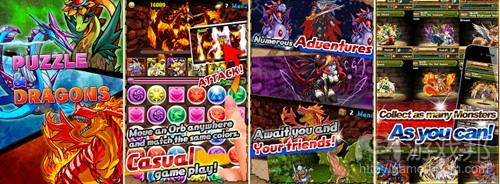

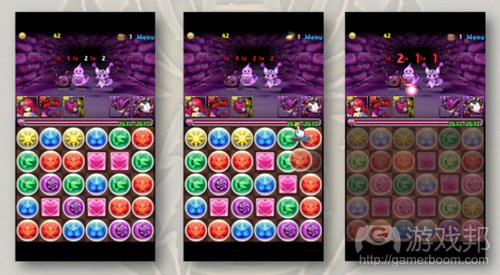




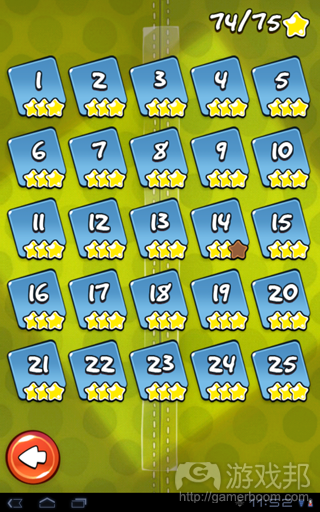

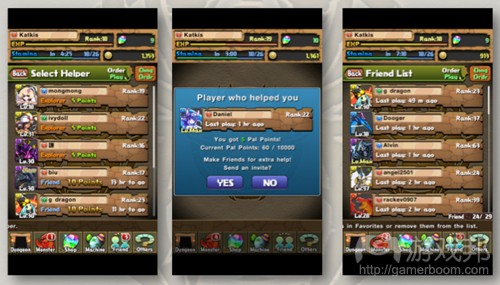

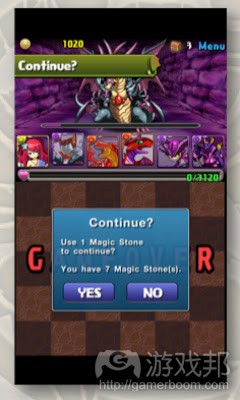















 闽公网安备35020302001549号
闽公网安备35020302001549号